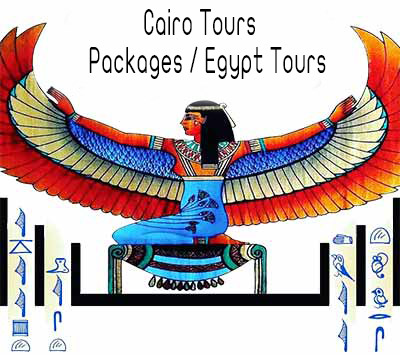It is the second-largest city in Egypt after Cairo and fourth-largest city in Africa after Lagos, Kinshasa and Cairo. It is the capital of Giza Governorate.
It is located on the west bank of the Nile, 4.9 km (3 mi) southwest of central Cairo, and is a core city of the Greater Cairo metropolis. Giza lies less than 30 km (18.64 mi) north of Memphis (Men-nefer), which was the capital city of the first unified Egyptian state from the days of the first pharaoh, Narmer.
Giza is most famous as the location of the Giza Plateau, the site of some of the most impressive ancient monuments in the world, including a complex of ancient Egyptian royal mortuary and sacred structures, including the Great Sphinx, the Great Pyramid of Giza, and a number of other large pyramids and temples. Giza has always been a focal point in Egypt's history due to its location close to Memphis, the ancient pharaonic capital of the Old Kingdom. Its St. George Cathedral is the episcopal see of the Coptic Catholic Eparchy of Giza.
Once thriving with the Nile that flowed right into the Giza Plateau, the pyramids of Giza were built overlooking the ancient Egyptian capital city of Memphis, across the river from modern day Cairo. The Giza Plateau is also home to Egyptian monuments such as the tomb of Pharaoh Djet of the First Dynasty, as well as that of Pharaoh Ninetjer of the Second Dynasty. The Great Pyramid of Giza at one time was advocated (1884) as the location for the Prime Meridian, a reference point used for determining a base longitude.
The area in what is now Giza served as the necropolis of several pharaohs who ruled ancient Egypt, during the 2nd millennium BC. Three of these tombs, in the form of giant pyramids, what is now the famed Giza pyramid complex.
As ancient Egypt passed under several conquests under the Persians, Greeks, Romans and Byzantines, so did the area in what is now Giza. A Byzantine village named Phylake or Terso meaning "the fortress", (now Tersa) was located south of Giza and should not be confused with it.
Egyptians called the area Tipersis which most likely refers to Babylon Fortress but may as well refer to Babylon in Mesopotamiaipersoi, Perso), which may correspond to Persians (as the name may be literally translated as "Persians of/from Babylon").
Eutychius gives a legend about city's name and its foundation by Artaxerxes Ochus, while Abu Salih says it was found by a Persian king Hush at the same time as Qasr ash-Sham.
As Muslims of the fledgling Islamic caliphate went on with their conquest of Egypt from the Byzantine Empire beginning in 639 AD, three years after their victory at the battle of Yarmouk in 636 AD, they conquered all of the land by the time they have captured the city of Alexandria in 641 AD. A year later in 642 AD, they founded the city of Giza. Its name, al-Jizzah in Arabic, means "the valley" or "the plateau", pertaining to the area's topography. Peust also suggests a Persian etymology of the word from Middle Persian diz (fortress, castle), which Persians could give to the pyramids or a fortress they've found in the area.
Giza has seen many changes over time. Changes in infrastructure during the different occupations of Egypt by various rulers, including the British in the 18th and early 20th century, focused on the construction of roads, streets, and buildings in the area. Giza is a thriving center of Egyptian culture, with many facilities and buildings in the current area. Giza saw much attention in particular to its vast amount of ancient Egyptian monuments found on the Giza Plateau, and has astonished thousands of visitors and tourists over the years. Giza's infrastructure saw much attention from both the British government prior to the 1952 coup d'état, as well as the current Egyptian government due to the city's importance in tourism.
The city hosts the first zoo on the entire African continent and one of the oldest in the Mediterranean region, the Giza Zoo. In addition, there are several parks, the most famous among them is Orman Park, which means "Forest Park" in the Turkish language.
Industries in Giza include movies, chemicals, Giza cotton, machinery and cigarettes. In addition, it also has many luxury apartment buildings along the Nile, making it a popular place to live.
Access to the city of Giza, which has its own governorate adjacent to the Governorate of Cairo, is dependent on the Cairo International Airport. Another local airport is found in Giza, called the Imbaba Airport, but recently the Egyptian government has decided to shut down the area and turn it into a cultural or an athletic area.
Giza's learning institutions include Cairo University, which was moved to Giza in 1924. The city is a hub of education and educational services not only for Egypt but also for the entire Mediterranean Region. Giza has numerous schools, kindergartens, and institutes of higher learning.
The Cairo Japanese School, a Japanese international school, is in Giza.The Deutsche Evangelische Oberschule, a German international school, is located in Dokki in Giza. Previously the Pakistan International School of Cairo had its campus in Giza.
The city hosts the second most successful club in Egypt and Africa, El Zamalek, which is located in the Meet Okba neighborhood near the Mohandesin neighborhood. Beside El Zamalek there are other clubs like El Tersana and Seid Shooting Club which is one of the elite clubs in Egypt.


